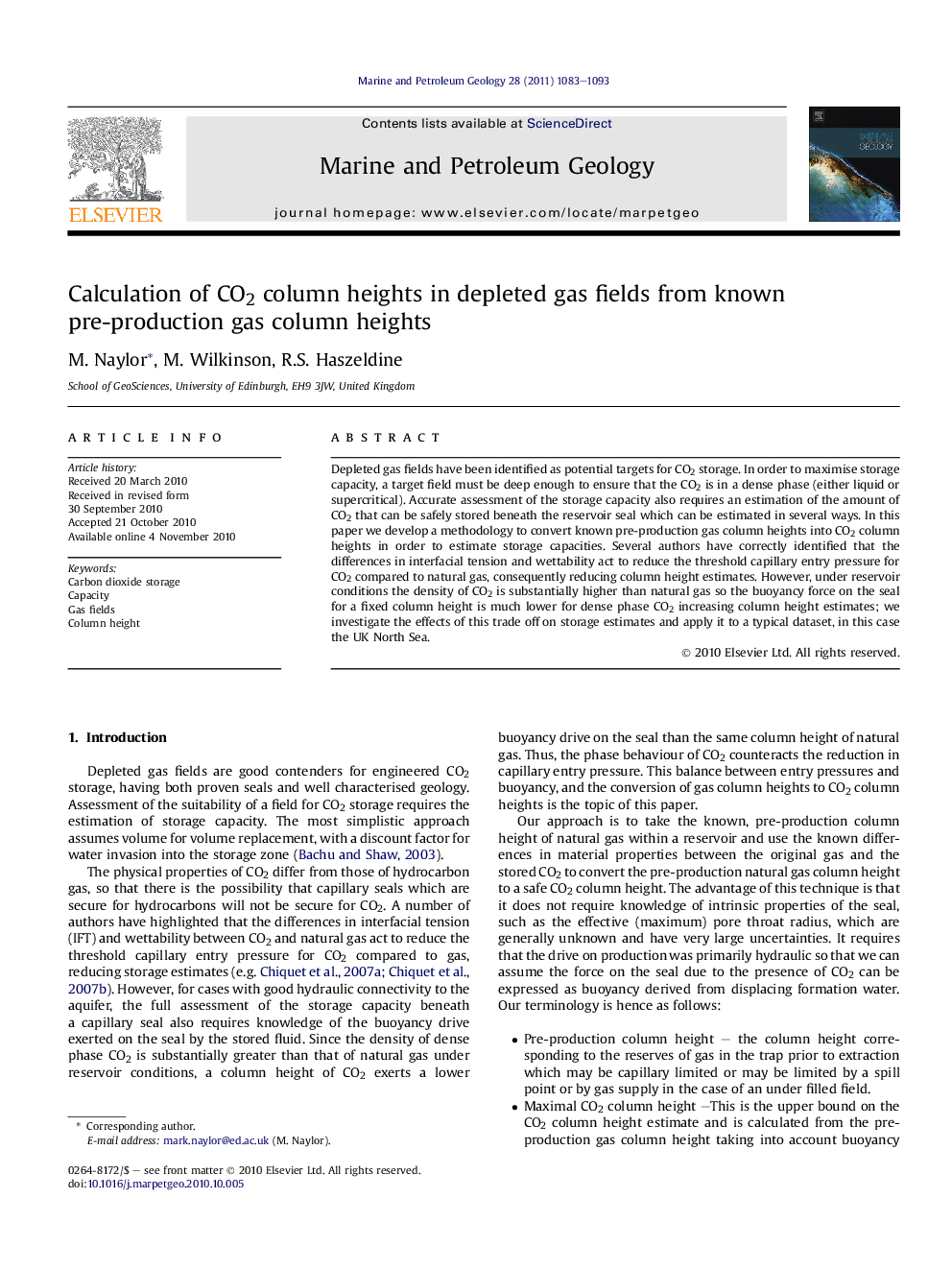| Article ID | Journal | Published Year | Pages | File Type |
|---|---|---|---|---|
| 4696272 | Marine and Petroleum Geology | 2011 | 11 Pages |
Depleted gas fields have been identified as potential targets for CO2 storage. In order to maximise storage capacity, a target field must be deep enough to ensure that the CO2 is in a dense phase (either liquid or supercritical). Accurate assessment of the storage capacity also requires an estimation of the amount of CO2 that can be safely stored beneath the reservoir seal which can be estimated in several ways. In this paper we develop a methodology to convert known pre-production gas column heights into CO2 column heights in order to estimate storage capacities. Several authors have correctly identified that the differences in interfacial tension and wettability act to reduce the threshold capillary entry pressure for CO2 compared to natural gas, consequently reducing column height estimates. However, under reservoir conditions the density of CO2 is substantially higher than natural gas so the buoyancy force on the seal for a fixed column height is much lower for dense phase CO2 increasing column height estimates; we investigate the effects of this trade off on storage estimates and apply it to a typical dataset, in this case the UK North Sea.
